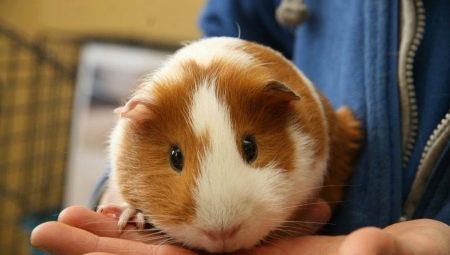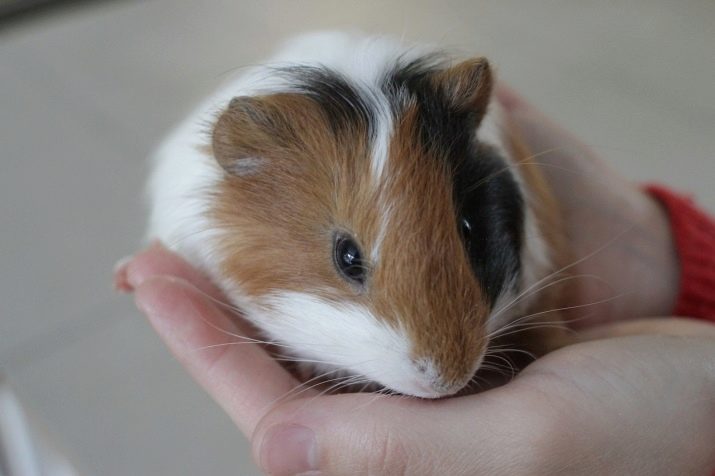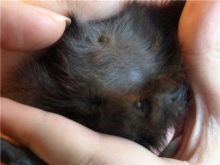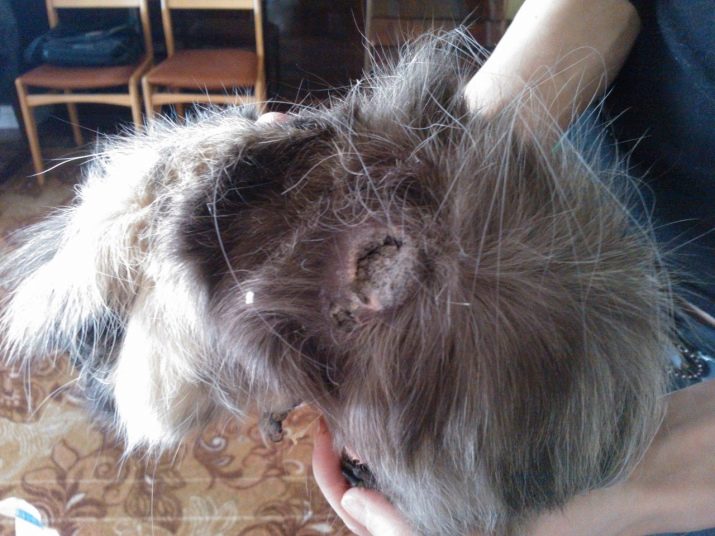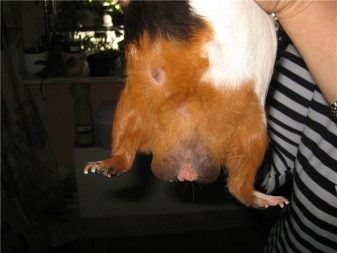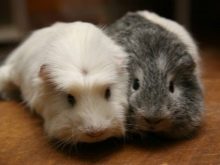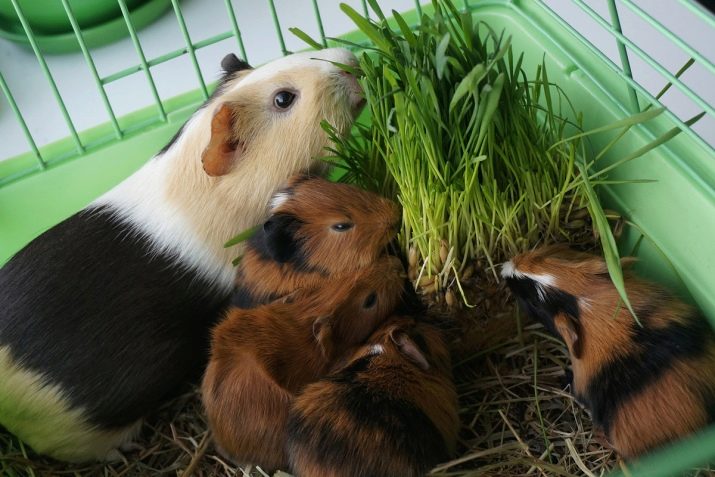The guinea pig is a small and shy animal. Sometimes the determination of her sex is difficult even for a specialist.
However, knowing the sex of your pet is very important.
- First of all, his name will depend on it - it’s hard to think of a name for an animal, if you don’t know whether it’s a boy or a girl.
- Secondly, it is important not to be mistaken with the floor, if you already have a guinea pig and you want to choose a pair for it.
- Thirdly, the temperament of males and females is different - it can also play a significant role in choosing a pet.
If you buy several guinea pigs, but do not intend to breed them, it will be necessary to resettle them depending on the sex.
Features of the inspection procedure
In order to determine the sex of the guinea pig by external signs, it is necessary to examine it. To do this, choose a good time when the animal is active and not frightened by anything. The peak of the activity of the guinea pigs occurs during the daytime - this means that it is better not to disturb them in the late evening, but to postpone the examination for the morning. It is important that the animal is not too scared during the inspection. Otherwise, it will dodge and may accidentally slip out of hand.
Falling even from a small height for these rodents is extremely dangerous.
And so, below are a few basic rules for inspection of the guinea pig.
- Before inspection, wear disposable rubber gloves. This rule of hygiene is especially important if you are going to examine several individuals at once. A large number of bacteria can accumulate on the genitals of guinea pigs. In order not to transfer them from one individual to another, it is recommended to use a new pair for each pig. And you can also use special disinfectant gels after inspecting each animal.
- To study the genitals, it is necessary to turn the guinea pig belly up, firmly holding it in the chest. To protect the animal in case of a fall, it is better to carry out the procedure over a soft pillow or bedding.
- The next step is to slightly push the fur in the crotch area and carefully examine it. In order to better see the genitals of a miniature animal, it is better to carry out the procedure in a well-lit room.
- When you finish the inspection, do not forget to reward the crumb for patience with a tasty delicacy.
Gender determination of the shape of the genitals
Genitals are formed in rodents even in the prenatal period. However, sex determination in babies who are breastfed, it is better to postpone until they reach the age of one month. Mom-mumps can reject and even destroy the cubs that people have touched because they feel an alien smell from them.
It is easiest to determine the sex of a guinea pig by the shape of the genitals. In girls, the genital slit is V-shaped and narrows towards the anus, and the skin around it has a large number of folds. The distance between the anus and vagina in females, as a rule, does not exceed two millimeters. The boys in this area have a small bump - this is the penis.
If you slightly press on the surrounding area - it will come out. Also, the male guinea pig has testicles in the underbelly, which can be seen on examination.
The presence of the anal bag
In nature, males of guinea pigs mark the territory with the help of an odorous enzyme, which is released from a special gland. This gland surrounds the anal area - it is called the anal bag or anal pocket. Thanks to this feature, boys will have a more pronounced anus. Whereas the girl has a much smaller anus - it is almost invisible and represents only a small hole.
Thus, having learned to determine the presence of the anal bag, you can easily distinguish the female from the male. In addition, in the cage of the male you can notice a much more pronounced smell, while in the dwelling of the female it will be practically absent.
Nipple size and animal weight
You can distinguish the boy from the girl by carefully examining their tummy, namely the size and color of the nipples. The female has pronounced pink nipples, they are clearly distinguishable when viewed and well felt. The male nipples are usually gray-brown in color. They are almost invisible and do not stand out to the touch.
When viewed from the mammary glands of guinea pigs, you can slightly blow on the tummy - so the wool will not interfere. In boys, you will see pale, pronounced small dots, and in girls, distinct and large nipples.
In addition, the sex can be determined by the size and weight of the guinea pig. Males are larger than females, their weight varies from one to one and a half kilograms, and body length is 30–35 centimeters. Females weigh approximately 800–1200 grams, their length is 20–25 centimeters. The size of the guinea pig depends on the age and breed, so this method cannot be considered one hundred percent correct. You can use it only as an additional indicator to make sure of your conclusion.
Feces form
One way to find out the sex of a guinea pig at home is to pay attention to the shape of the feces. For this, it is necessary that only one individual resides in one cage, so the method will be more reliable. Since the size of the anus is different in the female and the male, respectively, the shape of the feces will also vary.
In females, the dung is of a regular oval shape, while in males it is more elongated and slightly curved in the shape of an arc. In addition, the boy's droppings have a small groove, resembling a longitudinal groove - like that of wheat grain.
It is worth remembering that this method of determining sex is possible only if the animal is eating properly and is completely healthy.
Differences in the behavior of males and females
Watching the behavior of animals, you can also understand what sex an individual belongs to. In the wild, the task of the male is fertilization of as many females as possible during the period of the sexual hunt.
The role of the female is to raise the offspring and protect the babies from predators. Consequently, their behavior will be radically different.
Here are the main criteria by which the sex of a guinea pig should be assessed:
- if in one cage there are several heterosexual individuals, boys demonstrate more aggressive behavior, expressing a dominant position;
- boys are more noisy - they often engage in quarrels because of females, food, territory, but since in the wild nature guinea pigs live in groups, they are not able to inflict too serious injuries on each other;
- girls are much friendlier in everyday life - they do not fight among themselves and are able to show aggression only as a last resort, for example, if their offspring are in danger;
- females practically do not make sounds, males, on the contrary, can express discontent or defend their interests with a loud hoot;
- boys are much more active and quicker, they like to explore everything around, while girls prefer to sleep in the house or clean the skin.
Conclusion
If you are not going to breed guinea pigs, but still want your pet not to be bored alone, you should seriously consider the issue of sex determination.By the way, boys, despite the hyperactivity, can safely coexist in the absence of females. If a guinea pig lives in a single cage, knowing its sex is only necessary in order to find a suitable nickname.
When choosing a pet in a pet store, it is better not to trust the definition of sex only to the seller. For safety, inspect the animal yourself using one or more of the suggested methods.
How to determine the sex of the guinea pig, see below.
